Snowdrop Galanthus elwesii 'Maidwell'
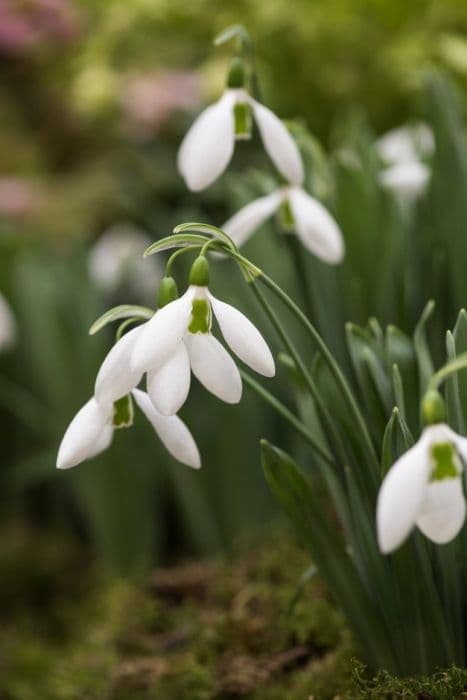
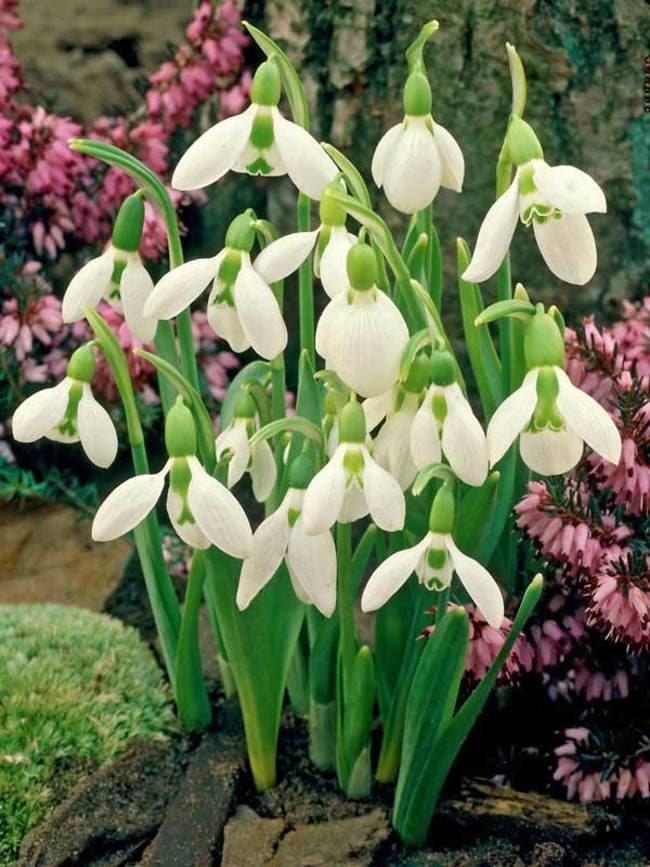

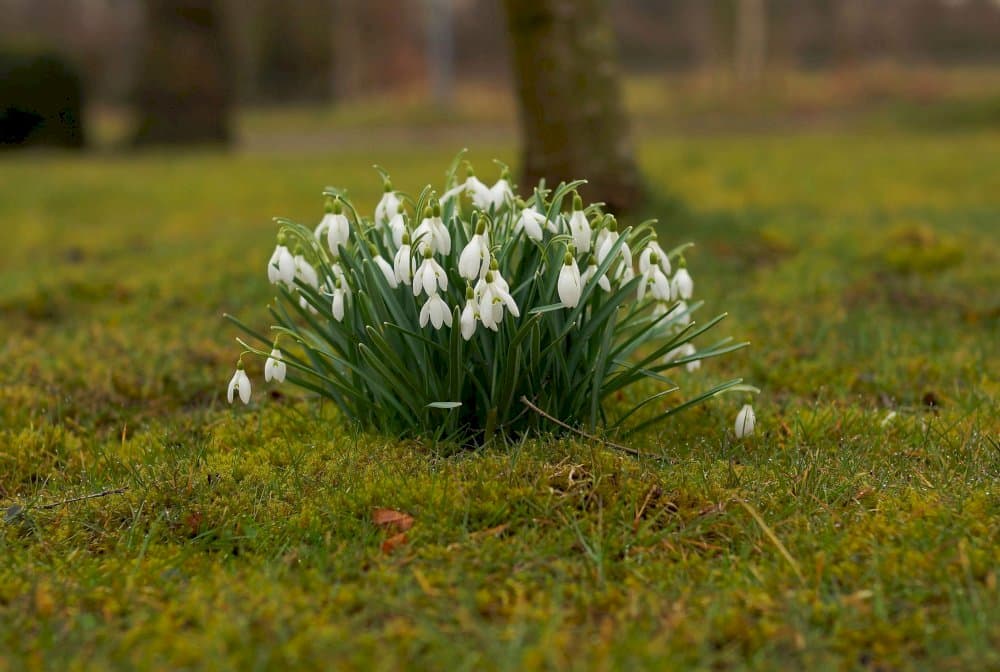
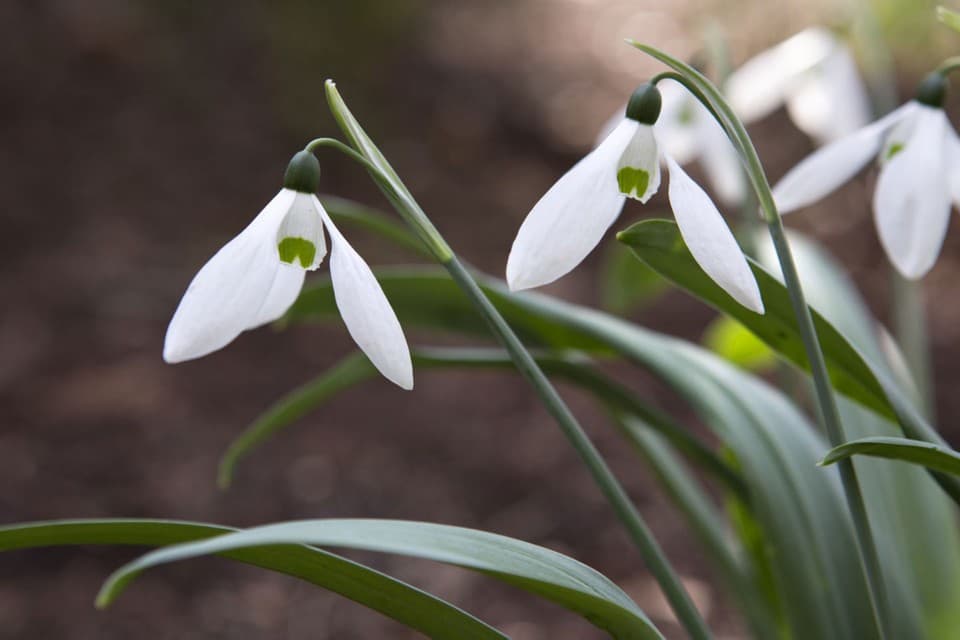
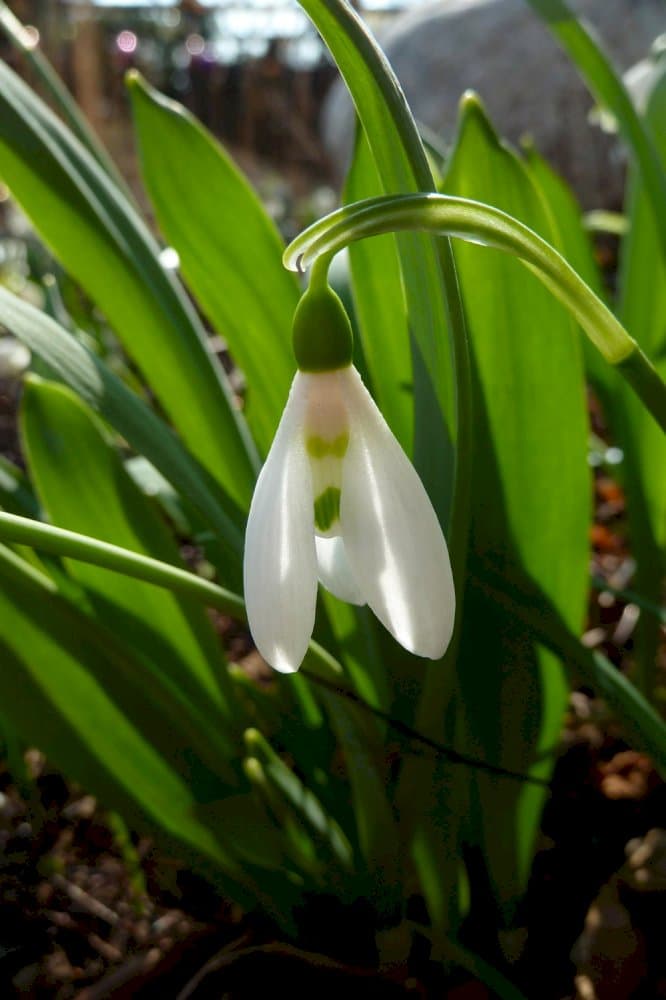



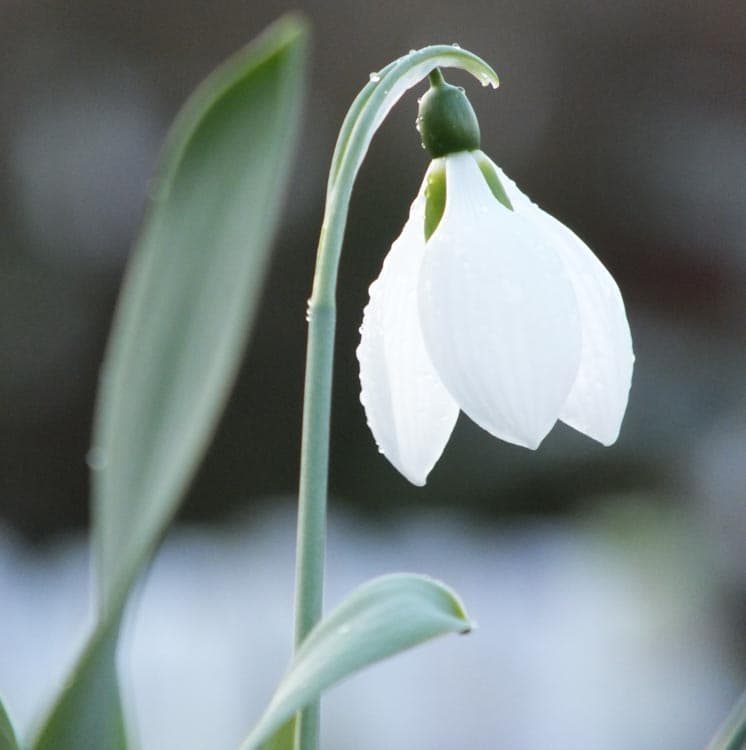
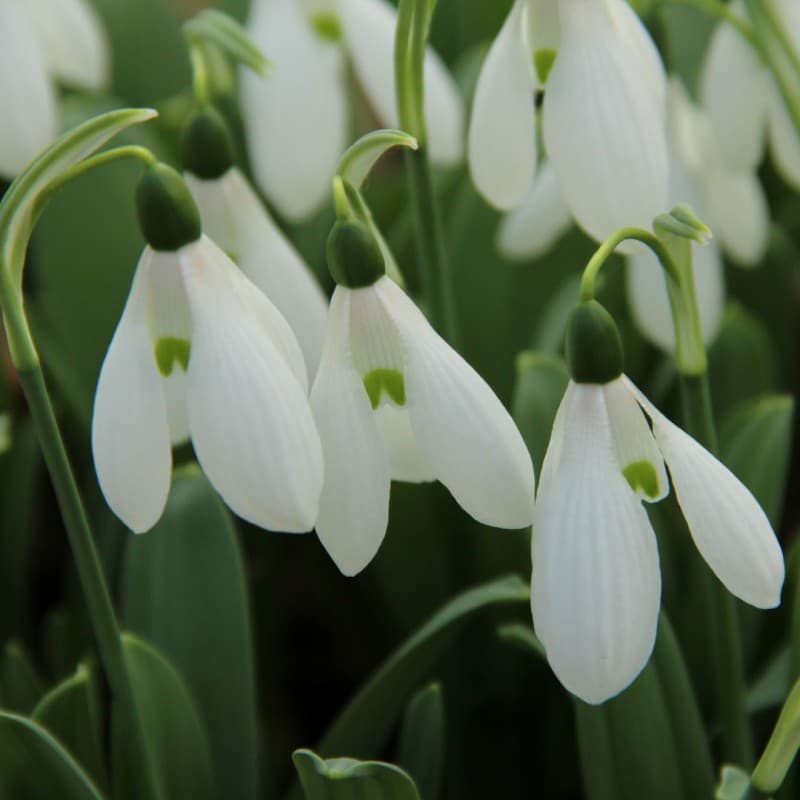
ABOUT
The plant known as 'Snowdrop' specifically the Galanthus elwesii 'Maidwell' variety, is a charming and delicate winter-flowering bulbous perennial. It is easily identified by its unique flowers, which typically have three outer petals that are pure white and arch over the inner petals. These inner petals are shorter and often feature a distinctive green mark at the tip. The delicate flowers hang from a single, thin, and often arching stem, giving them a nodding appearance that is quite striking against the winter landscape. The foliage of this Snowdrop consists of slender, glaucous, green leaves that may emerge either before or with the flowers. The leaves are sometimes described as being sword-like or strap-shaped, adding an attractive linear texture to the planting area. Overall, the combination of the dainty white flowers with their inner green markings and the slender leaves create an elegant and refreshing display during a time of year when most plants are dormant.
About this plant
 Names
NamesFamily
Amaryllidaceae
Synonyms
Giant Snowdrop, Elwes's Snowdrop, Greater Snowdrop
Common names
Galanthus elwesii 'Maidwell'
 Toxicity
ToxicityTo humans
The plant commonly known as snowdrop is considered to have toxic properties if ingested by humans. It contains alkaloids including galantamine, which can cause symptoms of poisoning. If any part of the snowdrop is ingested, potential symptoms could include gastrointestinal upset such as nausea, vomiting, and diarrhea. In some cases, more severe symptoms might occur, including irregular heartbeats, seizures, and neurological complications. Ingesting snowdrop should be avoided, and medical attention should be sought immediately if poisoning is suspected.
To pets
The snowdrop is also toxic to pets if ingested. The alkaloids present, particularly galantamine, can lead to symptoms of poisoning in animals such as cats and dogs. These symptoms may include vomiting, diarrhea, abdominal pain, lethargy, and in severe cases, seizures or cardiac abnormalities. Pet owners should prevent their animals from ingesting any part of the snowdrop plant and should seek veterinary care promptly if they suspect their pet has eaten any part of the plant.
 Characteristics
CharacteristicsLife cycle
Perennials
Foliage type
Deciduous
Color of leaves
Green
Flower color
White
Height
6-8 inches (15-20 cm)
Spread
3-4 inches (8-10 cm)
Plant type
Bulb
Hardiness zones
3-8
Native area
Turkey
Benefits
 General Benefits
General Benefits- Early flowering: Galanthus elwesii 'Maidwell', commonly known as Giant Snowdrop, blooms early in late winter to early spring, providing a splash of beauty when few other plants are in flower.
- Attracts pollinators: Its flowers are a valuable nectar source for bees and other pollinators emerging on warm days in late winter.
- Low maintenance: Giant Snowdrop is relatively easy to care for, requiring minimal attention once established in the right conditions.
- Cold hardy: It is tolerant of cold winter temperatures and can thrive in USDA Hardiness Zones 3-8.
- Drought tolerance: Once established, it can withstand periods of dry weather, making it suitable for gardens with low water availability.
- Naturalizing: This plant readily self-seeds and can naturalize in the garden, forming attractive drifts over time.
- Deer and rodent resistant: Giant Snowdrop is generally resistant to deer and rodents, which often avoid eating it due to its unpalatable nature.
- Versatility in the landscape: It can be used in a variety of garden settings, including borders, rock gardens, woodland gardens, and beneath deciduous trees.
- Aesthetic appeal: The delicate white teardrop flowers are iconic and bring charm to any garden space.
 Medical Properties
Medical PropertiesThis plant is not used for medical purposes.
 Air-purifying Qualities
Air-purifying QualitiesThis plant is not specifically known for air purifying qualities.
 Other Uses
Other Uses- Snowdrop 'Maidwell' bulbs can be used in a technique called "twin-scaling" for propagation, where bulbs are cut into sections yet can still regenerate into new plants.
- The crushed leaves of Snowdrops may produce a green dye that can be used for coloring textiles and crafts.
- These flowers can be floated in water bowls as part of a decorative display for events or as a natural table centerpiece.
- Snowdrop 'Maidwell' plants are sometimes planted on graves as a symbol of purity and the afterlife, especially in folk traditions.
- The sap from Snowdrop 'Maidwell' can sometimes be used as a natural adhesive for small tasks, though it is not a strong glue.
- The flowering of Snowdrops can be a phenological indicator, signaling the approach of spring and helping to time agricultural activities.
- The petals of Snowdrops may be used in crafting, for example, to create pressed flower arrangements or bookmarks.
- These plants can serve as inspiration for artists and poets, commonly featuring in literature and paintings as symbols of hope and renewal.
- Culinary application is not common due to their potential toxicity, but the flowers can be crystallized for ornamental purposes without consumption.
- The Snowdrop 'Maidwell' can be used in mindfulness practices in gardens, offering a focus for meditation during the early months of the year.
Interesting Facts
 Feng Shui
Feng ShuiThe Snowdrop is not used in Feng Shui practice.
 Zodiac Sign Compitability
Zodiac Sign CompitabilityThe Snowdrop is not used in astrology practice.
 Plant Symbolism
Plant Symbolism- Hope: Galanthus elwesii, commonly known as Giant Snowdrop, often blooms in late winter, signifying the end of the cold season and the hope for the upcoming spring.
- Purity: The white color of the Snowdrop’s petals is frequently associated with purity and innocence.
- Renewal: Appearing often as the first flower after the snow melts, Snowdrops symbolize new beginnings and the renewal of nature.
- Consolation or Sympathy: Because they are one of the first flowers to appear in the year, Snowdrops can represent comfort to people longing for new growth and an end to the dark winter days.
- Bravery: The Snowdrop's emergence through frozen soil is often seen as a sign of bravery and perseverance against adversity.
 Water
WaterThe Giant Snowdrop, or Galanthus elwesii 'Maidwell', prefers consistent moisture during its growing season, typically from late winter through spring. Water the bulbs moderately whenever the soil feels dry to the touch, approximately once a week, ensuring that the soil is moist but not waterlogged. During active growth, provide about one inch of water per week. After the foliage has died back following the blooming period, reduce watering as the bulb enters dormancy. It is important not to overwater to prevent bulb rot.
 Light
LightGiant Snowdrops thrive in partial shade to full sun conditions. A spot under deciduous trees is ideal, as it allows the Giant Snowdrop to receive sunlight in late winter and spring before the trees fully leaf out, while also providing some shade during the hotter months.
 Temperature
TemperatureGiant Snowdrop plants prefer cool to moderate temperatures, flourishing best in a range with a maximum of around 65 degrees Fahrenheit and a minimum just above freezing. The ideal temperature for promoting growth and flowering is between 35 and 50 degrees Fahrenheit. These plants are hardy and can survive brief temperature dips into the mid to high 20s Fahrenheit but should be protected from prolonged freezing conditions.
 Pruning
PruningPruning of the Giant Snowdrop is generally limited to the removal of spent flowers and yellowing foliage after blooming is complete to maintain a tidy appearance. These activities are usually carried out in late spring or early summer, after the plant has finished blooming and the foliage begins to die back naturally.
 Cleaning
CleaningAs needed
 Soil
SoilThe best soil mix for Snowdrop (Galanthus elwesii 'Maidwell') is well-draining, humus-rich, and moist with a pH of 6.5 - 7.5. A mix of loamy soil with added compost or leaf mold will be ideal for fostering strong growth and blooms.
 Repotting
RepottingSnowdrops (Galanthus elwesii 'Maidwell') typically do not need to be repotted often. They can be left undisturbed for several years unless the clumps become overcrowded, at which point you can divide and repot them after they finish flowering.
 Humidity & Misting
Humidity & MistingSnowdrops (Galanthus elwesii 'Maidwell') are tolerant of a wide range of humidity levels and do not have specific humidity requirements; average room humidity is generally sufficient.
 Suitable locations
Suitable locationsIndoor
Place in bright, indirect light and cool temps.
Outdoor
Plant in partial shade, enrich soil, naturalize well.
Hardiness zone
3-9 USDA
 Life cycle
Life cycleGalanthus elwesii 'Maidwell,' commonly known as Giant Snowdrop, begins its life cycle as a dormant bulb that typically lies underground during the hot summer months. In late winter to early spring, it breaks dormancy with the emergence of narrow, strap-shaped leaves and a singular flower stalk bearing a drooping white flower, marked with green at the tips of its inner petals. After flowering, the plant undergoes photosynthesis and stores energy in the bulb for the next season. Once the flowering is complete and the leaves have died back in late spring, the plant enters a period of dormancy again. During this time, the bulb divides and multiplies, creating offsets or daughter bulbs which grow to form new plants. The cycle repeats annually, with plants propagating themselves and gradually spreading to form larger clumps in the garden.
 Propogation
PropogationPropogation time
Late spring-early summer
The common name for Galanthus elwesii 'Maidwell' is the Giant Snowdrop, and it is most often propagated by dividing its bulb clumps. The ideal time for this process is when the plant is dormant, typically in late spring to early summer after the foliage has died back. To propagate, carefully lift the bulb clusters out of the soil using a trowel and gently separate individual bulbs from the main clump. Each bulb should have a portion of the basal plate and some roots attached to ensure successful growth. Replant the bulbs immediately at the same depth they were growing before, which is usually about 3 inches (approximately 7.6 centimeters), and space them about 3 to 4 inches (7.6 to 10.2 centimeters) apart to allow for adequate room for growth.









